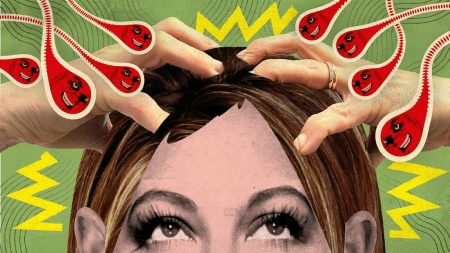The intoxicating elixir of new love, a heady brew of longing, excitement, and the fluttering sensation of butterflies in the stomach, is a universal human experience. This initial phase, often described as the ”honeymoon period,” is characterized by intense feelings of euphoria, attraction, and an almost obsessive focus on the beloved. While the ephemeral nature of this stage is often lamented, understanding the underlying chemistry of love can help us not only prolong this blissful period but also rekindle its magic even in long-term relationships. This knowledge empowers us to actively cultivate the very elements that contribute to romantic connection and reignite the spark that initially drew us to our partners.
The initial surge of romantic love is largely driven by a complex interplay of neurochemicals, primarily dopamine, norepinephrine, and phenylethylamine. Dopamine, the neurotransmitter associated with pleasure and reward, floods the brain, creating feelings of intense happiness and motivation. This surge is further amplified by norepinephrine, responsible for the heightened energy, focus, and decreased need for sleep often experienced during the early stages of love. Phenylethylamine, a natural amphetamine-like substance, contributes to the feelings of exhilaration and giddiness. This potent cocktail of neurochemicals creates a state of almost addictive infatuation, blurring our perception and idealizing our partner. However, as with any potent drug, the body eventually develops a tolerance, leading to a gradual decline in the intensity of these initial feelings.
As the initial chemical high subsides, the enduring power of love is not lost; it simply transitions to a different phase, often characterized by a deeper, more companionate love. This phase is less about passionate intensity and more about intimacy, commitment, and shared values. The hormone oxytocin, often referred to as the ”love hormone” or ”cuddle hormone,” plays a crucial role in fostering this deeper connection. Released during physical touch, intimacy, and childbirth, oxytocin promotes feelings of bonding, trust, and emotional closeness. Similarly, vasopressin, another important hormone, contributes to long-term pair bonding and attachment. Understanding the shift in these neurochemical processes helps us appreciate the evolution of love from initial infatuation to a more stable and enduring form.
Prolonging the initial phase of infatuation and rekindling its magic in established relationships involves consciously mimicking the conditions that trigger the release of these key neurochemicals. Novel experiences, shared adventures, and engaging in exciting activities together can boost dopamine and norepinephrine levels, reigniting the spark of excitement and passion. These activities can be as simple as trying a new restaurant, taking a weekend trip, or learning a new skill together. The key is to introduce novelty and challenge into the relationship, preventing it from falling into a predictable routine. Similarly, prioritizing physical intimacy, through cuddling, kissing, and sexual activity, can stimulate the release of oxytocin and vasopressin, strengthening the bonds of attachment and affection.
Maintaining open communication and emotional intimacy is equally crucial for sustaining a healthy and vibrant relationship. Regularly expressing appreciation, actively listening to your partner’s needs and concerns, and engaging in meaningful conversations can foster a deeper emotional connection. Creating a safe and supportive environment where both partners feel comfortable sharing their vulnerabilities and expressing their emotions can strengthen the foundation of trust and understanding, further solidifying the bond between them. Addressing conflicts constructively and finding healthy ways to navigate disagreements can also prevent resentment from building up and eroding the relationship.
Ultimately, the secret to a lasting and fulfilling relationship lies not in attempting to perpetually recreate the initial burst of infatuation, but in embracing the natural evolution of love. While the intense feelings of the early stages may fade, they can be replaced by a deeper, more profound connection built on trust, respect, and shared experiences. By understanding the chemistry of love and actively cultivating the elements that contribute to both passionate and companionate love, we can not only extend the honeymoon phase but also build a strong and enduring relationship capable of weathering the inevitable storms of life. This involves consciously incorporating novelty, prioritizing physical and emotional intimacy, and fostering open communication to keep the flame of love burning brightly.














